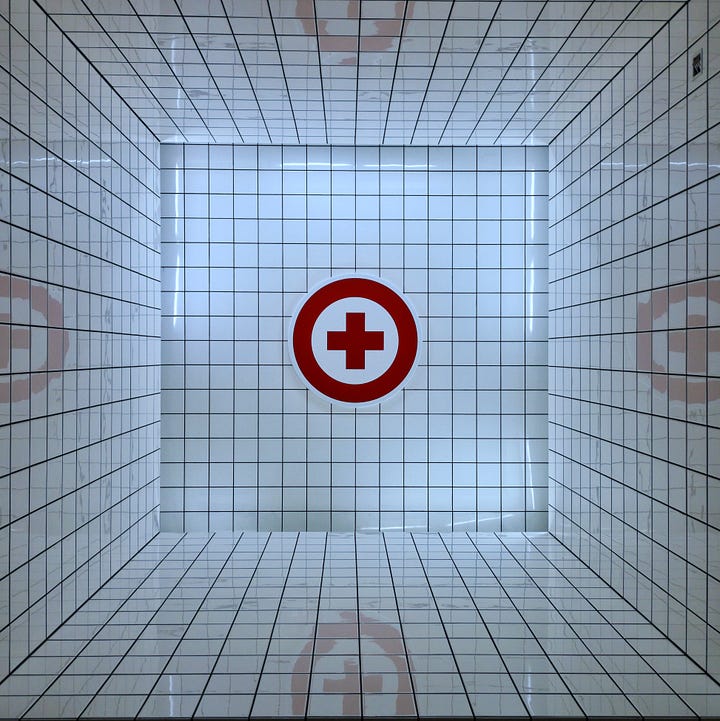The past year brought the world on its knees, yet it also ushered to the door several essential healthcare innovations. Telehealth and remote care became more widely available due to the restrictions imposed by the pandemic.
The strain on our health system meant that the most forward- looking medical institutions had to evolve new capabilities such as voice assistants capable of servicing hundreds of calls, over and above their usual complement. To speed up processing, Artificial Intelligence (AI) blossomed in various healthcare applications, with big data taking on a significant role in the field of predictive analytics.
These innovations are all rather impressive, and there are many more in the pipeline. However, most of them emerge from the top research centres located worldwide, such as the Mayo Clinic or some small start-ups tucked secretly in Silicon Valley. The truth is that many of them take a long time to become commercially viable, and it might be years before we start reaping their benefits. However, not all the innovation is happening on the other side of the world, and this article will highlight a few projects happening in our backyard.
These are all currently being conducted by researchers at the University of Malta in collaboration with other entities such as Mater Dei Hospital. Their innovative aspect is at par with other projects happening abroad. The researchers do miracles with the meagre funds they receive, many of which stem from the University but also through national, European or even private funding. However, the thing they have in common is that very few people know about them, and for most of the time, the lack of subsequent financing kills the project. The following is a selection of such projects.
3D PRINTED SMART HAND
There have been various projects relating to the creation
of artificial limbs. One of them uses the Open Hand Project
to create a 3D printed hand and enhance it using smart components. The project’s idea was to provide additional functionality to the artificial hand, such as changing the TV volume by moving the prosthetic arm from a distance. Voice recognition integrated within the hand allowed people to utter more complex commands sent back to any smart device in the house. Essentially, it fused a smartphone with an artificial limb.
MAPProHand PROJECT
The project seeks to build a commercial prosthetic hand from scratch. It aims to resolve the trade-off between simplicity, dexterity and usability typically experienced in commercial prosthetics. The project will conduct research on the hand’s optimal dexterity based upon a simple architecture which guarantees its usability. It will then create an artificial hand based upon the parameters proposed by an AI system.
AUTISM VIRTUAL REALITY
The Autism Virtual Reality (VR) application, already discussed in a previous article, lets people experience what an autistic child goes through during a typical day. When the user wears the VR headset, he finds himself in a school setting where he sees, hears, and senses the world through an autistic child’s eyes. The project aims to promote empathy, thus helping educators, careers and people interacting more thoroughly with autistic children.
CEREBRAL PALSY ASSISTANT
The SMARTCLAP project assists children with Cerebral palsy; the most common physical disability in children affecting movement and posture. The project places the user at the centre of the design process by creating a smart device which seeks to increase the child’s motivation. During the various sessions, children sometimes find it challenging to perform the tasks which the therapist suggests. By changing the therapy into a fun game, the researchers hope to get better feedback from them. This concept is called gamification, whereby a typical (sometimes tedious) task, is changed into a game. Various experiments show that gamification is very useful in diverse settings. Through this project, the child is encouraged to develop positive behaviour and improve his social interactions.
AMBIENT ASSISTED LIVING
Ambient Assisted Living (AAL) services use technology in a person’s daily life to help them live independently. Several AAL devices have been designed and developed, based on sensors, microphones and vision systems with quite promising results. However, for the field to reach maturity, many challenges need to be tackled, including developing robust processes in the real-world that are easy to use and accepted by society, users and carers. Because of this, researchers are trying to detect rare irregular events using just a standard camera system. Pose estimation models are used to detect a person in the image and extract the body keypoints. The process is usually called skeletal detection, whereby the position of the person’s skeleton is determined just from the picture. This information is essential to detect anomalies such as someone lying unconscious on the ground. Initial studies show some impressive results with the system capable of detecting most of the anomalies. These results also indicate that these methods compare very well with other commercial sensor-based solutions which are much more expensive and inaccessible for most people.
AUTOMATED GAIT ANALYSIS
Gait analysis is the systematic study of walking patterns which normally involves expensive and intrusive marker-based methods, in conjunction with multiple infrared cameras.
When combined, they produce kinematic data that precisely measure the walking behaviour of a person. Once the data is collected, specialists then interpret the conclusions from the kinematic data to make diagnoses. On the other hand this project developed an automated alternative to marker-based methods for gait analysis using standard cameras and AI. The system achieves kinematic data that consists of varying left and right joint angles for hips or knees. Two video cameras pointed at the side and front view of a walking subject capture this information. It then uses pose estimation as a markerless form of motion capture which feeds into a pipeline of algorithms for calculating and processing kinematics. The automated method is quite promising since it achieves results almost identical to that of an expensive marker-based system. Thus it reduces the effort and financial investment needed for gait analysis, leading to a broader diffusion in the health care community. Furthermore, since such a system can theoretically work with just two mobile devices, it would make it ideal for use in remote areas worldwide where the availability of expensive setup is impossible.
SELF-HARM, DEPRESSION AND SUICIDE
The Mental Health Promotion (MEHAP) project tries to help adolescents with mental health issues, leading to self-harm, depression, and increased risk of suicide. The project will launch a mobile phone app co-produced with young people who have self-harmed themselves. It includes many features such as a mood monitoring diary, a personalised self-help menu of mood-lifting activities, audio-taped relaxation and mindfulness exercises. After every use, young people are asked to re-rate their mood and are routed to emergency numbers if they are still feeling an urge to self-harm.
SCHIZOPHRENIA VIRTUAL REALITY
A challenge with teaching health care workers about schizophrenia is that it is hard for them to understand what patients feel. This project uses AI in a VR simulation to immerse the users in a virtual world and help them experience the symptoms that such a patient might feel. The simulation features several simple tasks, which the user attempts while facing challenges associated with schizophrenia, in the form
of visual and auditory hallucinations. AI is applied to the interactive narrative to allow the storyline to adapt to the user’s actions, thus increasing the experience’s immersiveness. Various mental health nursing students tried the experience, and it was well-received. It managed to increase their awareness and fostered empathy for people having schizophrenia. The next phase in this project is to use it as a treatment for the actual patients whereby patients can confront their hallucinations in a safe virtual setting.
PAIN REDUCTION
If the brain is distracted, the perception of pain is decreased even though the stimulus is still present. The idea of distraction as a pain management technique is not novel, and there are several case studies where this was proven to reduce pain perception by up to 50%. VR headsets distract children during routine painful procedures and treatments.
In the UoM’s Morpheus project, the researchers are using biosensors like smartwatches to read biological information. This data will make the VR experience change and adapt in real-time, in relation to what the patient is feeling. If a patient is bored, the game will become exciting. If he is anxious, it slows down and becomes more calming. The initial results have shown that the VR experience is much more effective and reduces the pain felt without the need to resort to any medication.
CANCER DETECTION
Another project which was due to start a few years back uses AI to detect abnormalities in radiographs. The idea was to analyse the imaging data and point radiologists at potential abnormalities. This project would speed up their work drastically and increase their accuracy since some cancers can be easily missed even with the trained eye. In keeping with this, an article published in Nature in 2020, on the application of AI in breast cancer screening, reported a reduction in both false positives and false negatives, when compared to standard radiologist screening. This result does not mean that an AI will replace a doctor any time soon. However, it is an opportunity for any doctor to get a second opinion of his diagnostics in no time and at a meagre cost, thus further reducing the human error rate. This project was the brainchild of Professor Aaron Casha, a brilliant surgeon and visionary who sadly died last year. Unfortunately, the project died with him too.
CONCLUSION
As one can see, the ongoing projects are various, and they touch with all areas of health. Probably there are many other projects which we are not listing here! This list was just a selection to celebrate the researchers involves and to showcase their novelty. These researchers go to great lengths to secure funding, find partners, work on the project, and keep it going after the funds dry out. However, the medical and tech worlds are still far apart. So when an idea brews, take the first step, reach out to the various researchers, and turn it into reality. After all, these innovations are essential to make the lives of people better.
Source: https://towardsdatascience.com/ten-artificial-intelligence-innovations-in-healthcare-3f5b30ea75b5

